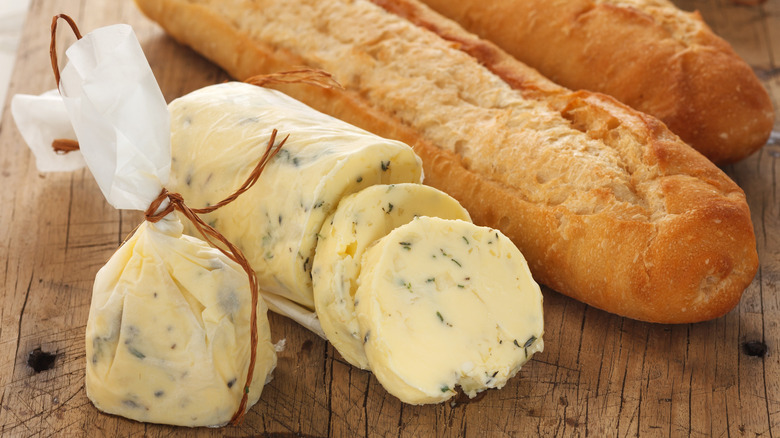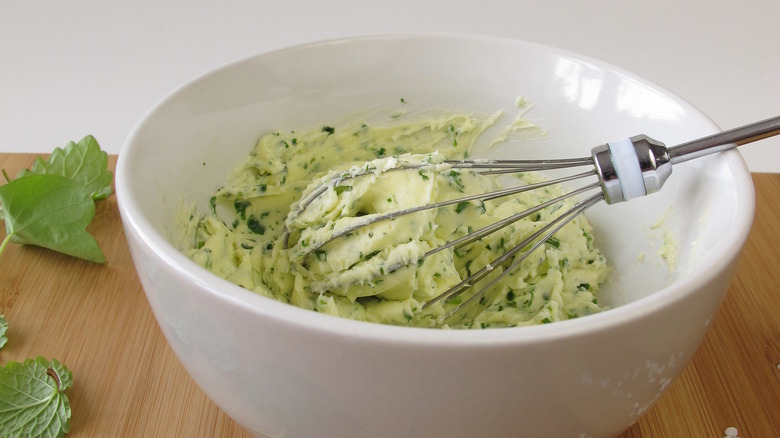Limit Liquid Ingredients To Avoiding Ruining Your Compound Butter
We can all agree that butter makes everything taste better. However, compound butter really drives home this notion. An infused butter crafted by folding in aromatics and flavorings, compound butter is an undeniably amazing ingredient to cook with, but also to garnish and serve. Whether you make it sweet with muddled raspberries and powdered sugar or savory with caramelized onions and garlic confit, the ingredients you use are entirely up to you. Just remember that whatever butter you decide to whip up, it's always best practice to use liquid ingredients sparingly.
The answer as to why you shouldn't use an abundance of wet ingredients in a compound butter is fairly straightforward — too much liquid makes for a less solid butter. Along with producing a condiment with a runny texture, using wet ingredients can also be a hassle to incorporate as they require a lot of patience in order to be fully (and seamlessly) worked into the butter.
Although staying away from moisture-rich ingredients is probably the best way to guarantee an optimal consistency, sometimes they can't be avoided. Instead of doing away with liquids completely and failing to realize your dreams of a brandy-infused or juicy dill pickle compound butter, we suggest simply using liquid ingredients modestly. In fact, only a mere teaspoon of liquid should be added for every stick of butter used in a recipe. Of course, there are also other ways to tackle the liquid limit.
No liquid, no problem
With a cap on the amount of liquid ingredients you should be using to whip up a compound butter, creating a complex result can seem intimidating. Luckily, there are easy ways to adapt, starting with opting for thicker sauces. For instance, miso paste can stand in for umami-laden Worcestershire sauce, much like creamed honey can take the place of runny maple syrup.
Additionally, you can also find inspiration by turning to ingredient equivalents that contain little to no moisture. Add vibrant lemon flavor by swapping citrus juice with zest, or impart vegetal tomato goodness by trading in fresh produce for sun-dried versions. In some cases, you may even have to substitute ingredients entirely and focus on capturing similar tastes, such as using chopped anchovies as opposed to soy sauce when looking to incorporate an element of salt.
Last, but not least, freshly ground spices are fantastic for amping up flavor without compromising the integrity of a compound butter. Smoky paprika or salt can take the place of liquid smoke, whereas chili flakes or cayenne powder can be a viable substitute for hot sauce. Even blends like an everything bagel seasoning or a five-spice powder can be useful in making better, multi-dimensional compound butters. With so many awesome alternatives, limiting liquid isn't actually as big of a drawback as it sounds!

